 |
 |
 |
| |
Losartan does not improve lymphatic tissue
fibrosis or T-cell recovery in HIV infection
|
| |
| |
CROI 2020
Reported by Jules Levin
Jason V Baker1,2, Julian Wolfson2, Caryn Morse3, Frank Rhame4, Caitlin David2, Jodi Anderson2, Gary Collins2, Greg Knowlton2, Jennifer Czachura2, Cavan Reilly2, Jeff Chipman2, Greg Beilman2, Russell P Tracy5, Irini Sereti6 & Timothy W Schacker2
1Hennepin Healthcare Research Institute, Minneapolis, MN; 2University of Minnesota, Minneapolis, MN; 3Wake Forest Baptist Medical Center, Winston Salem, NC; 4Allina Health, Minneapolis, MN; 5University of Vermont, Burlington, VT; 6NIAID/ NIH, Bethesda
Incomplete immune recovery despite HIV viral suppression is associated with excess clinical risk, and is, in part a consequence of fibrosis within secondary lymphoid tissues. We hypothesized that the angiotensin receptor blocker losartan would inhibit fibrosis and improve T-cell recovery within lymphatic tissue, given its established effects in blocking TGF-b.
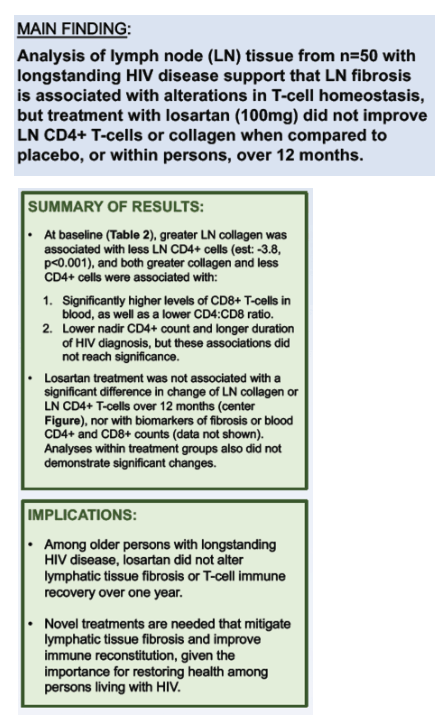
Abstract Body:
Incomplete immune recovery despite HIV viral suppression is associated with excess clinical risk, and is, in part a consequence of fibrosis within secondary lymphoid tissues. We hypothesized that the angiotensin receptor blocker losartan would inhibit fibrosis and improve T-cell recovery within lymphatic tissue, given its established effects in blocking TGF-b.
We pooled data from two randomized (1:1), double-blind, placebo-controlled trials of losartan (100mg) versus placebo among persons with HIV on ART with plasma HIV RNA <200 copies/mL. Participants underwent an inguinal lymph node (LN) biopsy at baseline and after 12 months. The percent area of collagen and CD4+ T-cells were quantified in the LN parafollicular T-cell zone, using quantitative image analysis. Fibrosis biomarkers in blood were measured using ELISA and electrochemiluminescence (Table). Baseline associations estimated the difference in LN percent area collagen associated with a 1-SD difference in T-cell measures. The treatment effect was defined as change on losartan minus change on placebo over 12 months..
Forty-eight participants had LN tissue available for analysis at both baseline and month 12 (n=23 on losartan; n=25 on placebo). Median age was 55 years, years of HIV diagnosis was 17, and current and nadir CD4+ count were 450 and 59 cells/mm3, respectively; 97% were male, 59% white. The table reports baseline and month 12 levels of study measures. LN collagen was inversely associated with LN CD4+ T-cells (est: -3.8, p<0.001), though did not reach significance with blood CD4+ count (est: -1.3, p=0.18), and was positively associated with blood CD8+ count (est: 2.5, p<0.01). Losartan treatment was not associated with a significant difference in change of LN collagen, LN CD4+ T-cells, or blood measures of fibrosis activity or T-cell recovery over 12 months (Table). Neither LN collagen nor LN CD4+ T-cells changed over 12 months within losartan or placebo groups..
Among older persons with longstanding HIV disease, losartan did not alter lymphatic tissue fibrosis or T-cell immune recovery over one year. Future research is needed to identify treatments that reduce lymphatic tissue fibrosis and/or improve the associated T-cell immune depletion, given the importance for restoring health among persons living with HIV..
CROI 2020
Reported by Jules Levin .
Jason V Baker1,2, Julian Wolfson2, Caryn Morse3, Frank Rhame4, Caitlin David2, Jodi Anderson2, Gary Collins2, Greg Knowlton2, Jennifer Czachura2, Cavan Reilly2, Jeff Chipman2, Greg Beilman2, Russell P Tracy5, Irini Sereti6 & Timothy W Schacker2
1Hennepin Healthcare Research Institute, Minneapolis, MN; 2University of Minnesota, Minneapolis, MN; 3Wake Forest Baptist Medical Center, Winston Salem, NC; 4Allina Health, Minneapolis, MN; 5University of Vermont, Burlington, VT; 6NIAID/ NIH, Bethesda
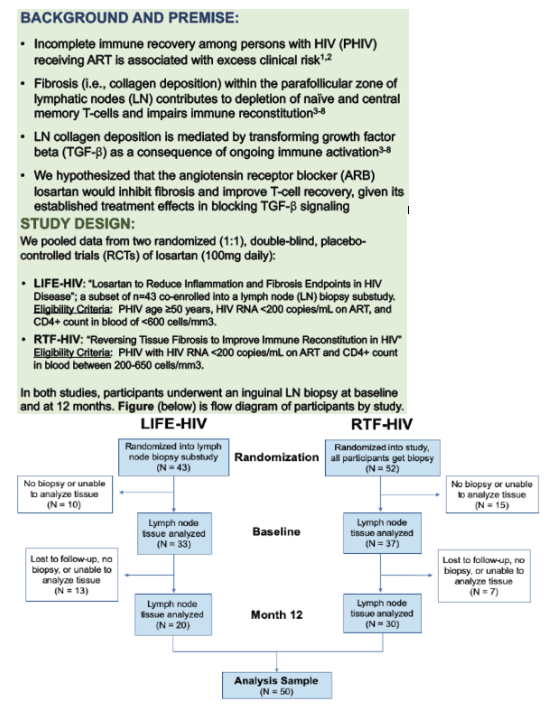
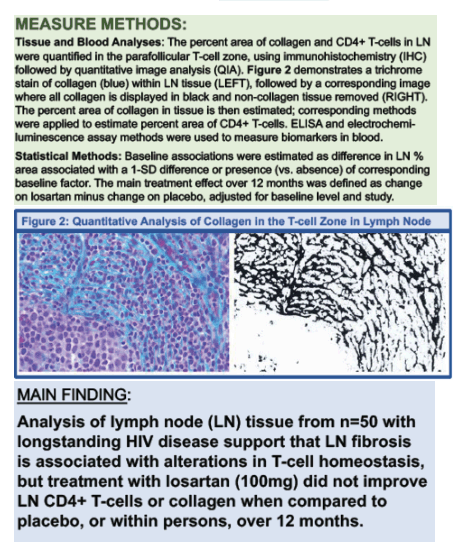

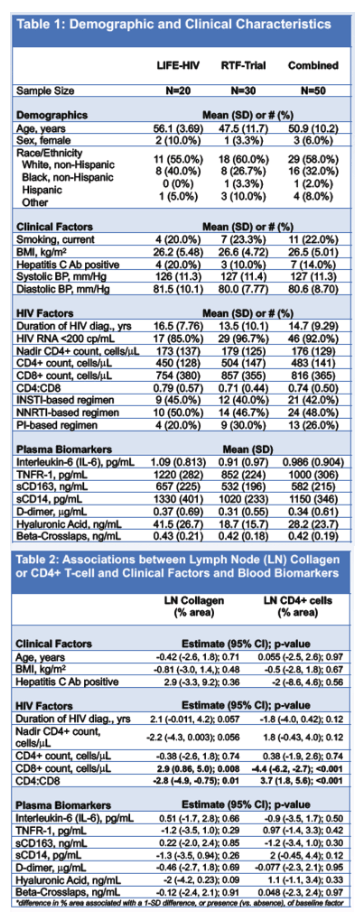
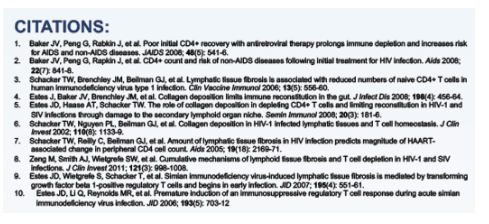
|
| |
|
 |
 |
|
|